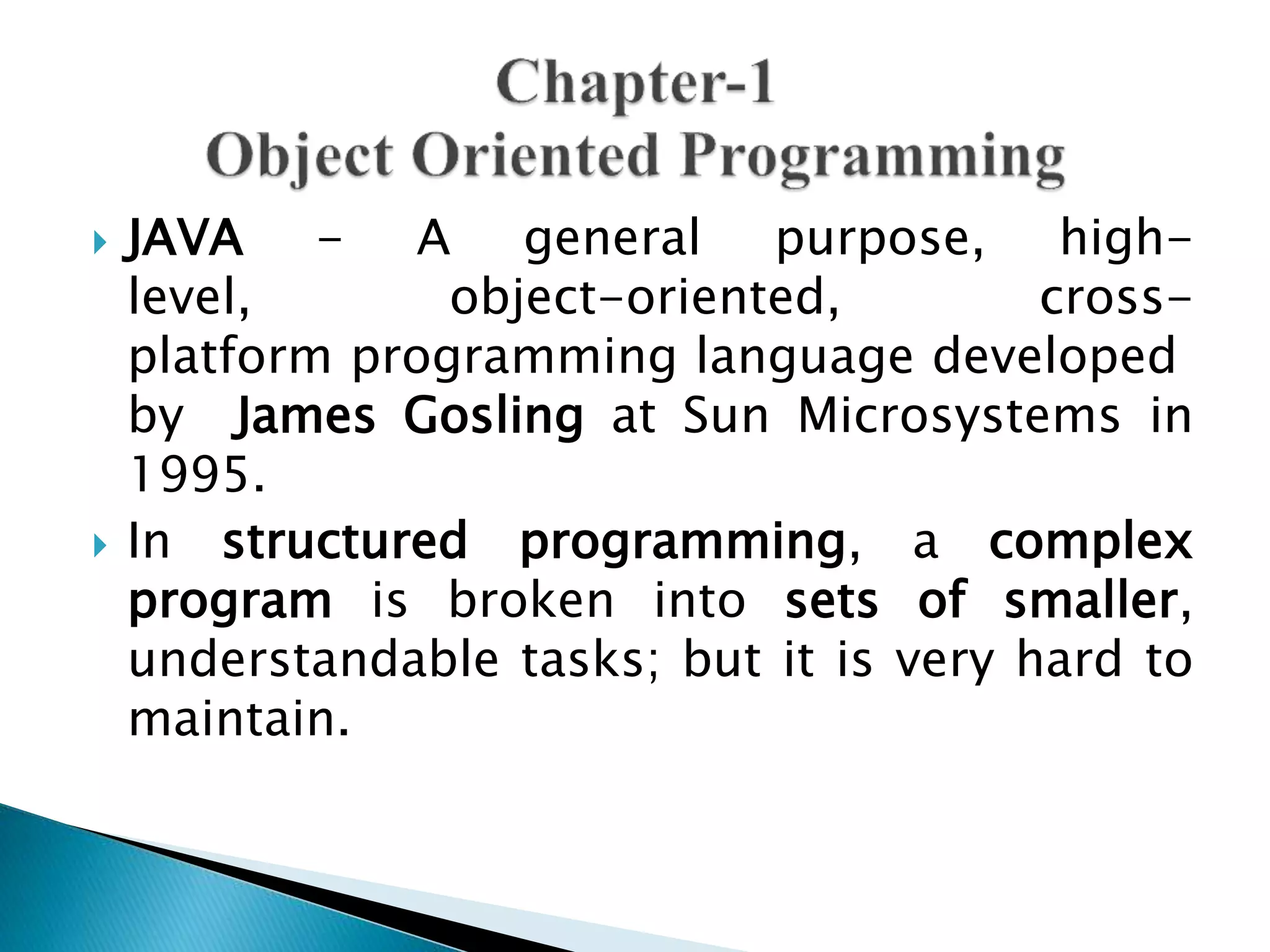This document discusses object-oriented programming (OOP) concepts like classes, objects, encapsulation, inheritance, and polymorphism. It explains that OOP improves code reusability, modularity, and maintenance by encapsulating data and methods together as objects. Some benefits of OOP include improved communication, seamless design to implementation, and code reuse through inheritance. Potential drawbacks include increased complexity, overhead from derived classes implementing base class functionality, and a high learning curve.





















